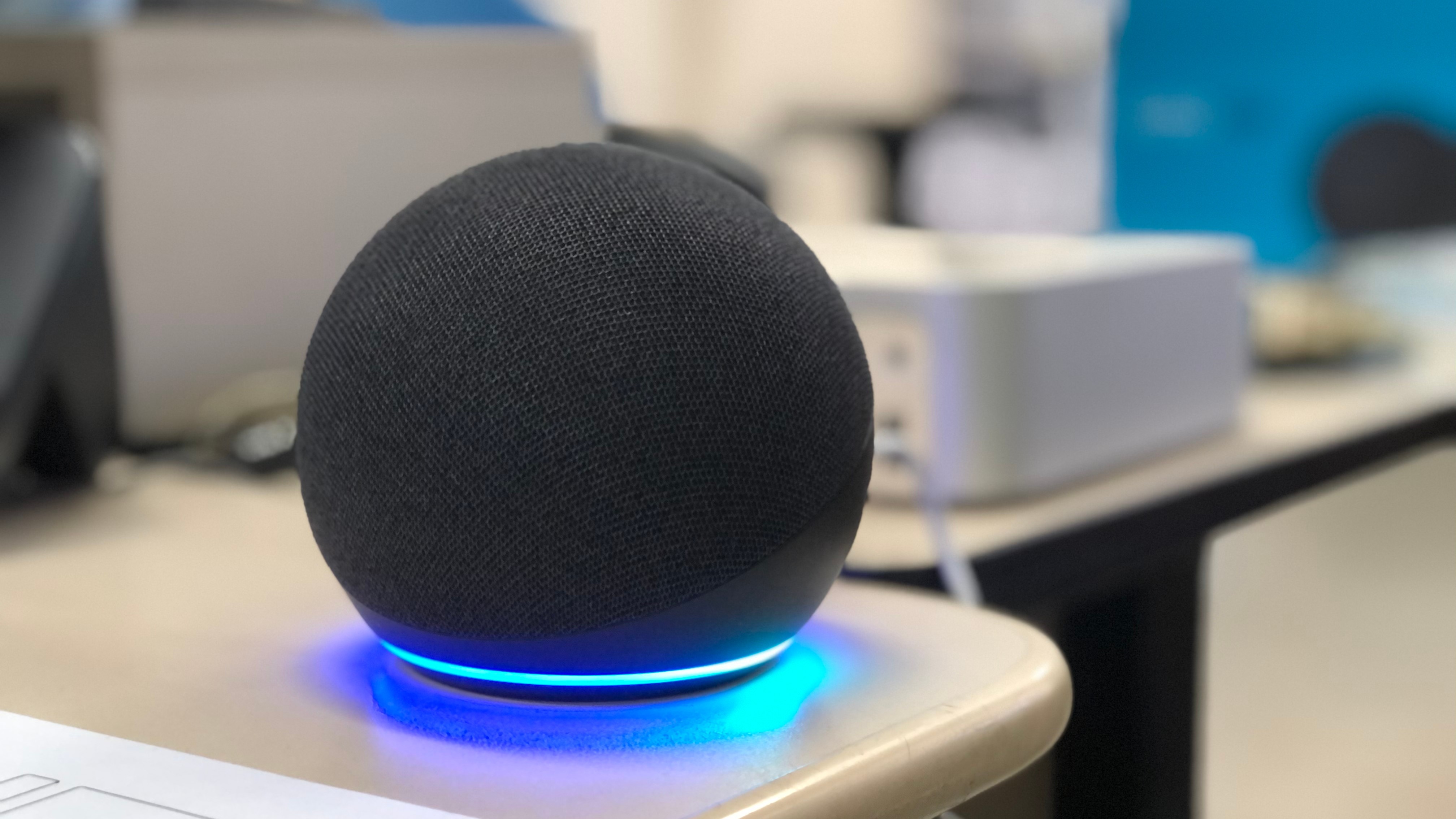The new Alexa Adaptive Volume feature is a game-changer — and you can try it now
This should save you some communication frustration

Based on how often I talk to Amazon Alexa, you'd think the AI assistant is one my dearest friends. But unlike my human acquaintances, Alexa's ability to adapt our conversations to suit the environment has been limited up until now.
Adaptive Volume is a new Alexa feature promising to make Amazon's assistant more conscious of background sounds. When Alexa notices noisy disturbances, it can raise its speaking volume so you can hear what it's staying. Whether there's construction going on outside your window or a roommates is blasting music on the other side of your wall, Alexa should be able to adjust.
- The best Alexa compatible devices for your smart home
- Microsoft Surface Pro 8 — here are 5 upgrades it needs to have
- Plus: These are the best appliances for student living
While Alexa can pause or lower the volume coming out of Alexa speakers when it's speaking, it can't control the sounds of non-smart speakers, TVs, or commotion of daily life.
Amazon has advanced the microphones in the best Alexa speakers so the assistant can detect its wake word for the best Alexa skills in loud surroundings. Don't get me wrong — good listening skills make Alexa a better communicator than most of my past significant others. But I want my voice assistant to have excellent response perception, too.
Alexa's latest upgrade reminds me of my Samsung Q80T QLED TV's own adaptive audio features. Auto volume is one of the best Samsung TV features, elevating the voices of people speaking on-screen when my apartment gets noisy. I live around the corner from a firehouse, so sirens are regular staples of my show and movie watching.
I can recall at least a couple times when I had to ask Alexa the same query twice, or even three times, because some kind of cacophony either distracted me or prevented me from hearing the assistant's answer.
How to activate Alexa Adaptive Volume
Adaptive Volume is available now. If you'd like to activate it, just say, "Alexa, turn on Adaptive Volume," in range of one your Echo speakers. I tested it on the Amazon Echo Dot with Clock, but the feature should also work with newer devices like the Amazon Echo Show 10 (3rd Gen) and Amazon Echo Show 8 (2nd Gen).
Get instant access to breaking news, the hottest reviews, great deals and helpful tips.
In March, Amazon gave Alexa the opposite communication ability, essentially. Whisper mode makes Alexa speak at a lower follow and shorten responses as much as possible, which is useful when you're trying to wake anyone who might be asleep in the house.
Of course, when you know how to create an Alexa smart home routine, you can assign specific speaker volumes to different times of day. You might want a lower volume in the morning, for example. Or at least until you've had coffee.
Looking for more Alexa communication tips? See how to change Alexa's voice, how to make Alexa speak faster or slower or how to change Alexa's name, giving the assistant a new wake word.
Be sure to also check out our guide on how to use Alexa for everything else you need to make the most of Amazon's voice assistant.
Next: Also read how I was equally terrified and impressed when I heard Alexa whisper for the first time.
Kate Kozuch is the managing editor of social and video at Tom’s Guide. She writes about smartwatches, TVs, audio devices, and some cooking appliances, too. Kate appears on Fox News to talk tech trends and runs the Tom's Guide TikTok account, which you should be following if you don't already. When she’s not filming tech videos, you can find her taking up a new sport, mastering the NYT Crossword or channeling her inner celebrity chef.

